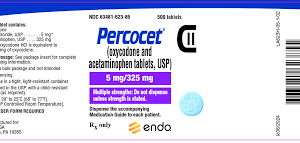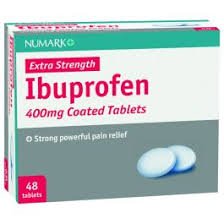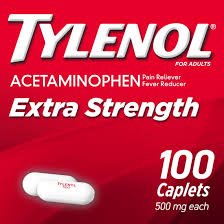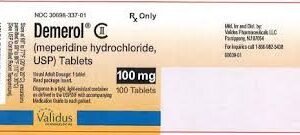Description
What is Xylocaine Jelly?
Xylocaine Jelly is a topical anesthetic formulate to provide temporary numbing or pain relief. It contains lidocaine, a local anesthetic that works by blocking nerve signals in the area where it is apply. Xylocaine Jelly is use in various medical settings, such as dental, urological, gastrointestinal, and gynecological procedures, to relieve pain and discomfort.
The jelly form of lidocaine allows for easy application and precise targeting of the painful area. It is commonly used when local anesthesia is required without the need for injections, making it a more comfortable and less invasive option.
Benefits of Xylocaine Jelly
- Effective Pain Relief:
- The primary benefit of Xylocaine Jelly is its ability to provide quick and effective pain relief by numbing the treated area. This is particularly useful for minor medical procedures or conditions causing localized pain.
- Non-Invasive:
- Unlike injectable local anesthetics, Xylocaine Jelly offers a non-invasive solution for numbing the area. This makes it an ideal choice for patients who may be wary of injections or those needing only localized anesthesia.
- Quick Onset of Action:
- Xylocaine Jelly typically begins to work within 5 to 10 minutes of application, providing rapid relief from pain and discomfort.
Side Effects of Xylocaine Jelly
While Xylocaine Jelly is generally safe when used as directed, it can cause side effects in some individuals. Common and serious side effects may include:
- Common Side Effects:
- Skin Irritation: Mild redness, itching, or burning at the site of application may occur. These effects are typically temporary and subside after the jelly is removed.
- Dryness: Some users may experience dryness or peeling of the skin in the treated area.
- Serious Side Effects:
- Allergic Reactions: Although rare, Xylocaine Jelly may cause an allergic reaction, with symptoms such as swelling, difficulty breathing, or hives. If any signs of an allergic reaction occur, stop using the gel and seek immediate medical attention.
- Dizziness or Lightheadedness: In some cases, excessive use or prolonged exposure to lidocaine can lead to dizziness, confusion, or a feeling of lightheadedness. This is usually a sign of too much lidocaine being absorbed into the bloodstream.
- Tingling or Numbness in Unintended Areas: Overuse or improper application of Xylocaine Jelly can lead to numbness or tingling sensations in areas beyond the intended treatment site, such as the lips, mouth, or fingers.
- Methemoglobinemia: Rarely, lidocaine can cause a condition called methemoglobinemia, which reduces the blood’s ability to carry oxygen. Symptoms include bluish discoloration of the skin, shortness of breath, and fatigue. Seek immediate medical attention if any of these symptoms occur.
- Overdose:
- Xylocaine Jelly should not be applied in large amounts or over extensive areas of the skin. Overdose can lead to toxic reactions, including seizures, irregular heartbeats, and even respiratory failure. Always follow the recommended dosage and application instructions.
How to Use Xylocaine Jelly
- Clean the Affected Area:
- Before applying this Jelly, clean the area to remove dirt, oils, or other substances that might interfere with the gel’s effectiveness.
- Apply a Thin Layer:
- Apply a thin layer of the jelly directly to the affected area. Rub gently to ensure that the gel is spread evenly over the skin or mucous membranes.
- Avoid Overuse:
- Do not apply this Jelly to large areas or broken skin unless directed by a healthcare provider. Overuse can lead to systemic absorption and potentially dangerous side effects.
- Wash Hands After Use:
- After applying the gel, wash your hands thoroughly to avoid accidental contact with your eyes or mucous membranes.
- Wait for Full Effect:
- Allow the gel to take effect. The numbing action should begin within 5 to 10 minutes, but the total duration of numbness will depend on the amount applied and the location.
Precautions and Warnings
- Avoid Contact with Eyes:
- Xylocaine Jelly should not be applied near the eyes, mouth, or other sensitive areas unless instructed by a healthcare provider. If the gel comes into contact with these areas, rinse thoroughly with water.
- Pregnancy and Breastfeeding:
- While this Jelly is generally considered safe for use during pregnancy and breastfeeding, it is important to consult with a healthcare provider before using it to ensure it is safe for you.
- Allergies to Lidocaine:
- If you are allergic to lidocaine or other local anesthetics, avoid using Xylocaine Jelly. Discuss alternative options with your healthcare provider.
- Heart and Liver Conditions:
- Individuals with a history of heart or liver disease should use Xylocaine Jelly cautiously. Consult your doctor before use if you have these conditions.
- Children:
- Consult a healthcare provider before using this Jelly in children, as children may be more sensitive to lidocaine and its effects.
Conclusion
Xylocaine Jelly is a highly effective topical anesthetic used for providing temporary pain relief in a variety of medical and dental settings. It works by numbing the treated area, making it ideal for procedures that require local anesthesia, such as dental work, urological procedures, or gastrointestinal exams.






Reviews
There are no reviews yet.